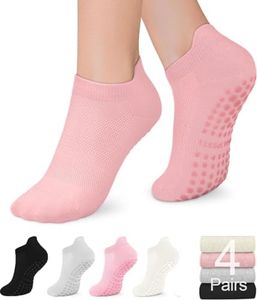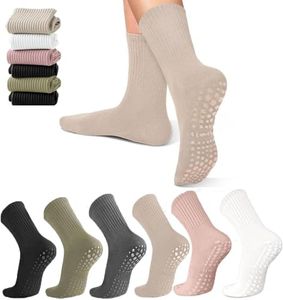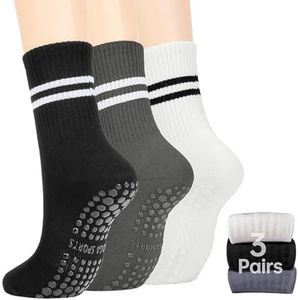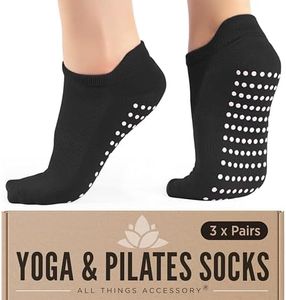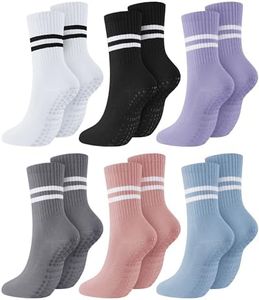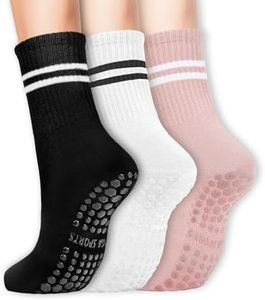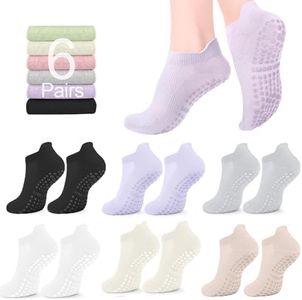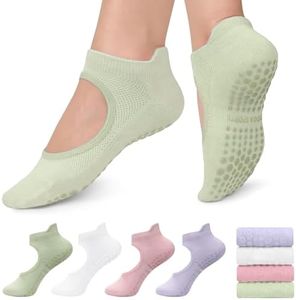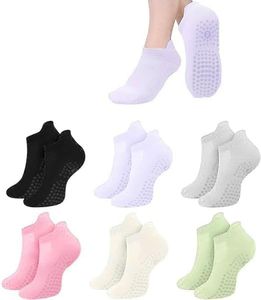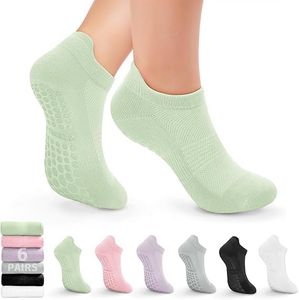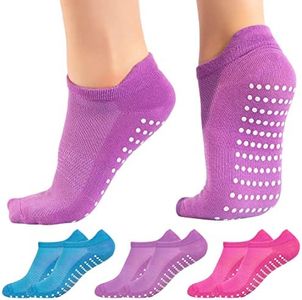We Use CookiesWe use cookies to enhance the security, performance,
functionality and for analytical and promotional activities. By continuing to browse this site you
are agreeing to our privacy policy
10 Best Yoga Socks
From leading brands and best sellers available on the web.Buying Guide for the Best Yoga Socks
Choosing the right yoga socks can make your practice more comfortable, safe, and enjoyable. Yoga socks are designed to provide grip, support, and hygiene during yoga sessions, whether you're practicing at home or in a studio. When buying yoga socks, it's important to consider what kind of activities you do, how much grip you need, how sensitive your feet are, and whether you value extra features like breathability or toe separation. Taking a little time to match the socks to your personal needs will help you get the most out of your yoga sessions.Grip/Non-Slip FeatureGrip or non-slip feature refers to the tread patterns or silicone dots on the sole of the socks that prevent you from slipping during yoga poses. This is important because many yoga movements require stability, and a good grip can reduce the risk of slipping, making your practice safer and more confident, especially on smooth or slippery floors. There are socks with light grip for basic balance, medium grip for moderate activity, and heavy grip for dynamic or advanced yoga styles. If you practice vigorous or hot yoga, or often sweat, go for socks with maximum grip. If you do gentler yoga or practice mostly on mat, lighter grip may be enough.
Material and BreathabilityThe material of yoga socks affects comfort, moisture control, and how much your feet can breathe. Most yoga socks are made from blends of cotton, polyester, bamboo, or synthetic fibers. Natural fibers like cotton and bamboo are soft and breathable, while synthetics often dry faster and stretch more. Some socks focus on moisture-wicking to keep your feet dry. If your feet tend to get hot or sweat, look for socks labeled as highly breathable or moisture-wicking; for cooler studios, slightly thicker and cozy materials may be preferred. Always choose a material based on your comfort and the climate where you practice.
Toe Design (Closed Toe vs. Toe-less/Open Toe vs. Individual Toe)Yoga socks come in different toe designs: closed-toe (like normal socks), open-toe (with your toes exposed), and individual toe (each toe in its own pocket, like gloves). Closed-toe socks offer full coverage and warmth, while open-toe versions allow toes to spread and breathe, improving balance and tactile feel. Individual toe socks can enhance toe flexibility and help prevent skin contact between toes, which can be good for hygiene. If you value warmth and simplicity, choose closed-toe. If you want your toes to move freely and grip the mat, open-toe or individual toe designs are preferable.
Fit and ElasticityFit refers to how snugly the socks stay on your feet without being too tight or too loose, and elasticity describes their ability to stretch and conform to your foot shape. A good fit ensures the socks won’t bunch up or slide off during poses. Sizing usually follows basic foot size categories, and some designs are labeled as one-size-fits-most. Check if the socks have elastic bands around the arch or ankle for extra support. If you have narrow, wide, or unusually shaped feet, pay special attention to the fit to avoid discomfort during practice.
Hygiene and WashabilityYoga socks are often chosen for hygiene reasons, especially in public studios. Some have antibacterial properties, while others are simple but easy to wash and dry. Socks that are machine washable and dry quickly are convenient for regular use. If cleanliness is your main concern, look for socks advertised as antimicrobial or with simple wash instructions that fit your lifestyle.

